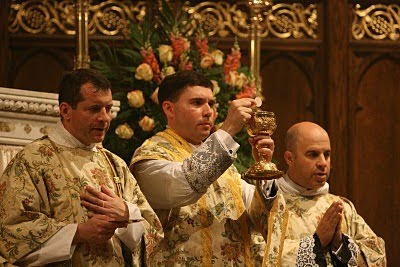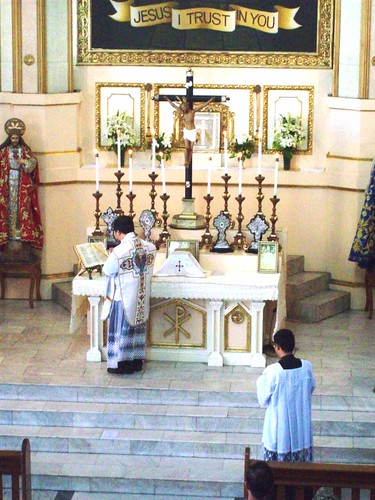The Transalpine Redemptorists recently posted photos of a Mass said for the repose of the soul of Mrs. Valerie Potkins. Please pray for her soul. I would particularly recommend these prayers from the Office of the Dead:
Read more >>
In the Office for the Dead throughout the year | |
| Oratio Orémus. Deus, qui inter apostólicos sacerdótes fámulos tuos pontificáli seu sacerdotáli fecísti dignitáte vigére : præsta, quæsumus ; ut eórum quoque perpétuo aggregéntur consórtio. | Collect Let us pray. O God, who didst cause thy servants, for whom we pray, to enjoy the dignity of the priesthood, and some to be bishops, after the order of thine Apostles : grant unto them, we beseech thee, finally to rejoice in the company of those Saints in heaven whose ministry they did sometime share on earth. |
| Deus, véniæ largítor et humánæ salútis amátor : quæsumus cleméntiam tuam ; ut nostræ congregatiónis fratres, propínquos et benefactóres, qui ex hoc sæculo transiérunt, beáta María semper Vírgine intercedénte cum ómnibus Sanctis tuis, ad perpétuæ beatitúdinis consórtium perveníre concédas. | O God, who desirest not the death of a sinner but rather that all mankind should be saved : we beseech thee mercifully to grant that the brethren, kinsfolk, and benefactors of our congregation, who have passed out of this world, may by the intercession of blessed Mary Ever-Virgin and of all thy Saints come to enjoy with them everlasting blessedness. |
| Fidélium, Deus, ómnium cónditor et redémptor, animábus famulórum famularúmque tuárum remissiónem cunctórum tríbue peccatórum : ut indulgéntiam, quam semper optavérunt, piis supplicatiónibus consequántur : Qui vivis et regnas cum Deo Patre in unitáte Spíritus Sancti Deus, per ómnia sæcula sæculórum. R. Amen. | O God, the Creator and Redeemer of all them that believe : grant unto the souls of thy servants and handmaidens the remission of all their sins ; that as they have ever desired thy merciful pardon, so by the supplications of their brethren they may receive the same. Who livest and reignest with the Father, in the unity of the Holy Ghost, ever one God, world without end. R. Amen. |












.JPG)
.JPG)
.JPG)
.JPG)
.JPG)
.JPG)
.JPG)
.JPG)
.JPG)





